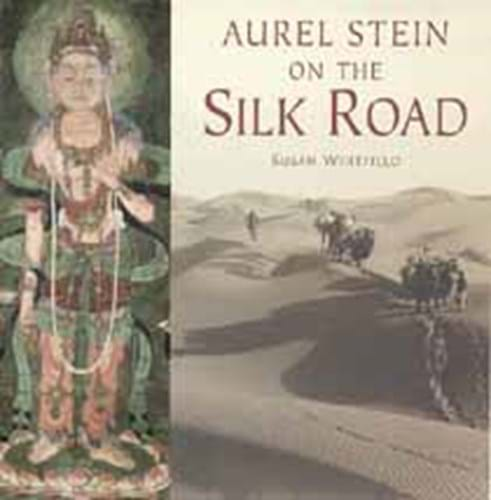
Accompanied by a series of seven fox terriers, all called Dash and numbered 1 to 7, his feats were described by one of his contemporaries as "the most daring and adventurous raid upon the ancient world that any archaeologist has attempted", while Stein is described on one official Chinese website as a "heinous thief", the treasures obtained mainly by theft, but also via unfair transactions, blamed on the "corrupt and impotent governments after the later Qing dynasties."
Most of the exhibits in the British Library's current Silk Road exhibition come from Stein's vast collection of artefacts from the Silk Road, the world's most romantic and important trade route, which stretched more than 5000 miles from the Mediterranean to the borders of China. The exhibition concentrates on the Eastern half of the route during the first millennium, from Samarkand to Turfan, and four ancient kingdoms along its southern path, Khotan, Miya, Miran and, most significantly, Dunhuang.
Today Stein is famous, or infamous, for his explorations among the caves of Dunhuang, an important oasis town on the Silk Road.
A secret, sealed-up cave had been discovered by a Daoist priest in 1900, its entrance had been plastered over and disguised, but when opened it was crammed with ancient Buddhist manuscripts, printed documents and paintings. In 1907 Stein was the first foreigner to gain access to Dunhuang and one of the scrolls he photographed was the Buddhist scripture, the Diamond Sutra, c.868AD, the earliest dated complete book in the world. In these caves Stein acquired what was to be his greatest single cache of manuscripts and paintings, one which brought him fame, and, in later generations, infamy, at both ends of the Silk Road.
The exhibition includes the detailed shopping list of two monks who 1200 years ago were sent to Dunhuang to buy supplies for their monastery. They must have had deep purses as the list of purchases included silk and woollen coats, pottery and wooden containers, leather shoes with soles, undergarments, paper and wolfhide blankets. On the back of the list, touchingly, was a selection of local words and hints on how to pronounce them. Also here, and perfectly preserved for more than 1000 years in the desert, is a bolt of silk, one of the most precious traded
commodites.
This fascinating if rather thin book, with much archive photography, written by the curator of British Libary's exhibition Silk Road: Trade, Travel, War and Faith, tells us something, but not enough about the small, wiry loner who recovered the native history of India from before the Muslim invasions; conducted some of the first archaeological surveys of Iran and Iraq; and, in his 60s, pioneered the use of aerial photography. Dr Susan Whitfield's own catalogue of the exhibition will be published at the end of June while for £4.95 there is a small guide to the exhibition with a selection of key exhibits.




